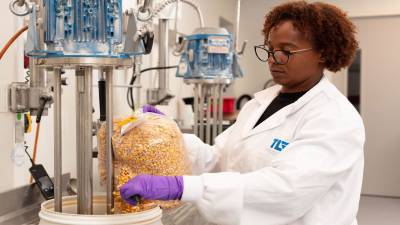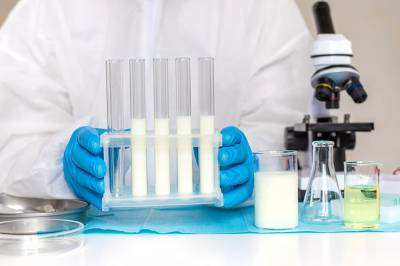Nutritional analysis in food products
Insight, labelling and product development.
Why conduct nutritional analysis?
1. Legal labelling
According to Regulation (EU) 1169/2011, a nutrition declaration is mandatory on almost all pre-packaged foods. Manufacturers must accurately state the amount of energy, fat, carbohydrates, protein and salt per 100 grams. Nutritional analysis provides the basis for this.
2. Internal quality control
Analysis supports quality control and recipe management. Deviations can be detected in time. Claims such as "source of fibre" or "reduced salt content" must be substantiated with analysis results. These claims are subject to additional rules under Regulation (EC) 1924/2006 (nutrition and health claims regulation).
3. Product development
Insight into composition helps optimise products, for example by reducing sugar, fat or salt. Data from nutritional analysis are also used by the Netherlands Nutrition Centre for public information via the Wheel of Five.
Standard analysis: the Big 8
Nutritional analysis usually determines the following profile:
Component | Analysis |
Protein | Kjeldahl or Dumas |
Fat (total) | Soxhlet or gravimetric |
Saturated fat | Fatty acid analysis |
Carbohydrates | Calculation or enzymatic determination |
Sugars | Enzymatic or HPLC |
Dietary fibre | AOAC methods |
Sodium | AAS or ICP-MS (salt calculation) |
Energy | Calculated based on content (kJ/kcal) |
Additionally, vitamins, minerals or specific fatty acids can be measured, for example in products with health claims or within special product categories.
Analysis methods: measuring and calculating
Lab analysis: most accurate, recommended for new or complex products.
Recipe calculation: based on averages from databases such as the NEVO table. Suitable for standard products.
Most producers combine both: recipe calculation as a starting point and lab analysis for validation. Depending on the matrix and preparation method, deviations can occur. Direct analysis prevents labelling errors.
Legal requirements
Per 100 g or 100 ml, the following must be stated:
- Energy (kJ and kcal)
- Fat, of which saturates
- Carbohydrates, of which sugars
- Protein
- Salt (calculated from sodium)
Optional declarations are fibre, vitamins and minerals, provided they are present in significant amounts. Labelling must be in table format with a clearly legible font. Compliance is monitored by the NVWA.
Case study: labelling error in cereal product
A breakfast cereal producer carried out recipe calculations using NEVO data. After changing an ingredient (enriched oat flakes), lab analysis showed the salt content was 40 percent higher than calculated.
Impact:
- The nutrition claim "reduced salt content" no longer complied with the claims regulation.
- Labels had to be revised.
- The producer switched to fixed lab analysis checks for any recipe change.
Role of the Wheel of Five
The Netherlands Nutrition Centre uses analysis results when assessing whether a product fits within the Wheel of Five. Product group-specific criteria apply:
- Maximum levels of saturated fat, salt and sugars
- Minimum level of fibre
Foods that do not meet these criteria fall outside the Wheel of Five. Analysis makes this assessment transparent and objective.
Processing and nutritional value
The degree of processing is not, in itself, a nutritional indicator. Composition determines whether a product fits within a healthy diet. Wholemeal bread and olive oil, for example, are processed but retain their beneficial nutritional value. Only concrete analysis results can determine how healthy a product really is.
Conclusion
Nutritional analysis is crucial for labelling, internal quality control and substantiating health information. It supports compliance with legislation, strengthens transparency towards consumers and helps producers develop nutritious, safe and competitive products.
Meld je aan voor de laatste tips en adviezen dat je gelijk in de praktijk kunt brengen.









